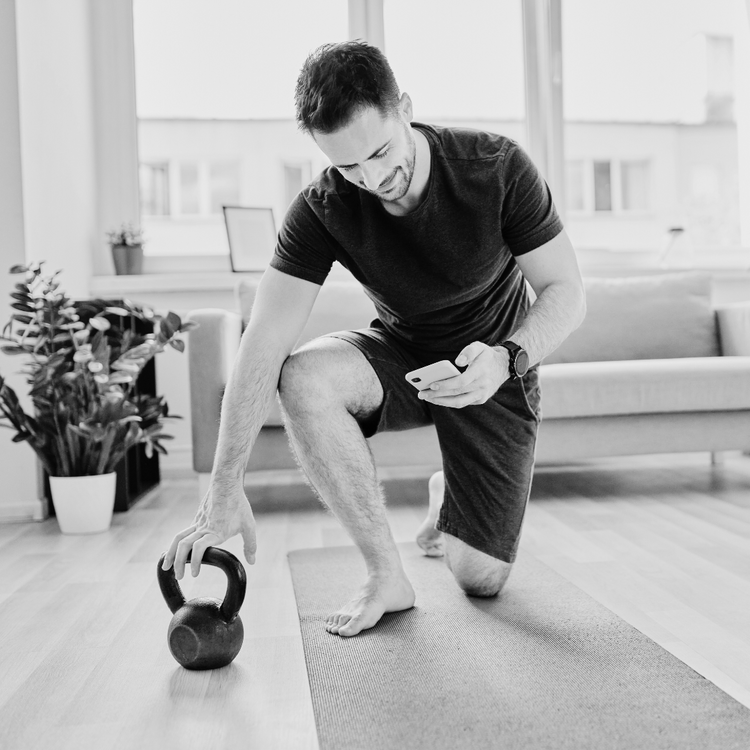
Mastering the Art of Safe Home Workouts: Essential Tips
Next Level Home Fitness
Hello, fellow fitness enthusiasts! I'm Coach Lauren, and today we're diving into the world of home workouts. It's true; working out at home has many advantages, like privacy, saving money, saving time, and the convenience alone! But it also presents its own unique challenges. Unlike the gym, where trainers and instructors are readily available to guide and correct your form, at home, it's typically just you and that is why it is so important to follow these recommendations to ensure you achieve the results you want and stay safe while working out at home.
Planning for a Secure Home Workout:
1. Create a Clear Workout Zone:
The safety of your home workouts begins with your workout space. Clear out any potential obstacles like kids' toys or random boxes. Make sure you have ample room for your routines.
2. Choose the Right Footwear:
While dressing down for your home workouts is perfectly fine, don't forget to gear up with the right footwear. Closed shoes provide protection, especially if you're handling weights or engaging in high-impact activities. Sneakers will also provide the necessary cushion when you are doing any kind of jumping or impact exercise.
3. Do Your Equipment Homework:
Home fitness gear might be budget-friendly, but it varies in quality. Before making a purchase, check warranties and service agreements. If you're on a tight budget, opt for simple equipment like jump ropes and resistance bands. You really don’t need to spend a lot of money on fancy equipment in order to achieve results.
4. Fuel Your Body:
A balanced meal a couple of hours before your workout can keep you energized and allow your body to digest the food. If you're still hungry, snack on something light, like a smoothie or a handful of nuts.
5. Stay Hydrated:
Water remains your workout buddy. The American Council on Exercise recommends a specific hydration regimen: about 20 ounces of water a few hours before working out, another 8 ounces half an hour before, and at least 7 to 10 ounces every 20 minutes during your workout.
6. Include Rest Days:
Listen to your body; it's your best guide. It requires time off for recovery and muscle building. On rest days, opt for complete relaxation or gentle activities like a leisurely walk or restorative stretching.
7. Seek Guidance:
If you're uncertain about your workout routine, there's a wealth of resources available. At NLHF, our Commitment Coaches are trained to make sure you’re workouts are challenging, and appropriate, based on your ability. During your weekly 15 minute check-in, they will help you to identify any obstacles that might be holding you back as well as help you set goals each week, and provide you with the tools and knowledge needed to feel confident and successful on your fitness journey.
8. Consult Your Doctor:
If you've been sedentary or have chronic medical conditions, a consultation with your doctor is essential. There's a suitable physical activity for every situation.
Executing a Safe Home Workout:
1. Stay Focused:
Your home is a treasure trove of distractions, but when it's time for your workout, stay focused. Pick a workout space that is clear of clutter, and noise. and will allow you to focus on your workout. Committing 20-40 minutes of exercise daily will boost your mood, activate your metabolism and get you lasting results.
2. Customize Your Workout:
Tailor your workout to your interests and abilities. Remember your ability, medical history, and previous injuries when designing your fitness regimen. Respect your limits. As commitment coaches we will guide and support you in finding the most effective work-out that will get you results!
3. Mind Your Form:
What you think you look like during your workout and reality may differ. Using a mirror or recording yourself to ensure your form is a good idea. Remember, it is more important to do what feels good in your body than it is to do an exercise that you may not be able to do, for a variety of reasons (i.e. injury, neck/back/knee/wrist pain). Modifications are great to use so that you can target the same muscle groups without injury.
4. Gradual Progression:
Increase workout intensity gradually. A talk test can help gauge the intensity of your aerobic exercise. If you can talk and sing, it's low intensity; if you can only talk, it's moderate; and if you're breathing too hard to talk comfortably, it's vigorous.
5. Warm-Up:
A proper warm-up is crucial. Spend 5 to 10 minutes on slow, gentle movements that prepare both your body and mind. Check out one of our many warm-up videos offered.
6. Cool Down:
Finish your workout with 10 minutes of simple exercises that keep your body limber. Use this time for static stretches, capitalizing on your newfound flexibility.
7. Cross-Train:
NLHF offers a well-rounded fitness program. Balancing heart health, strength, balance, and flexibility in your workouts.
At Next Level Home Fitness, we're committed to helping you achieve your fitness goals in a safe and effective way. With these tips in mind, your home workouts can become a rewarding and secure part of your fitness journey. Keep pushing those boundaries and embracing the power of home fitness. We will be with you every step of the way!
Be Healthy Where You Are,
Coach Lauren
